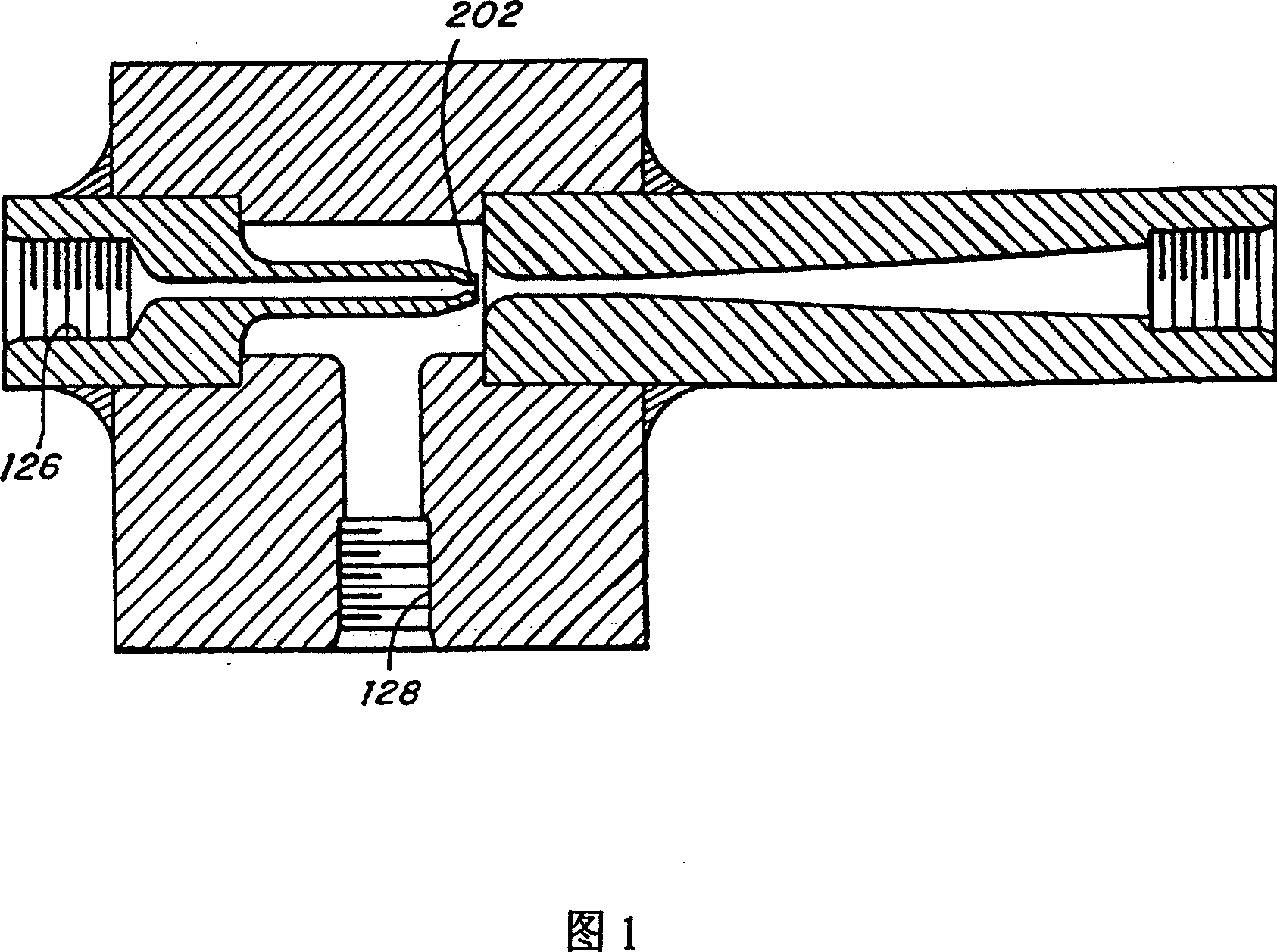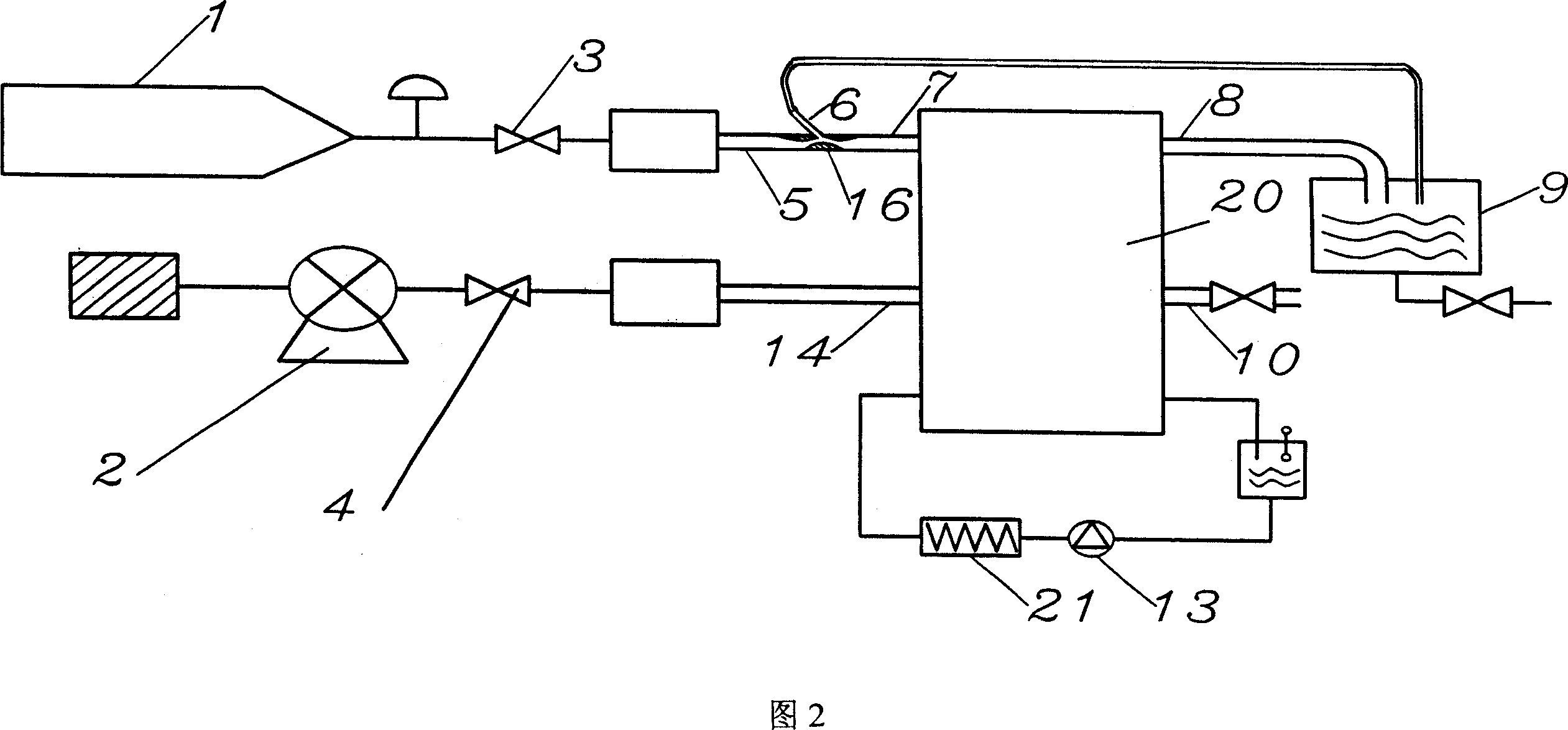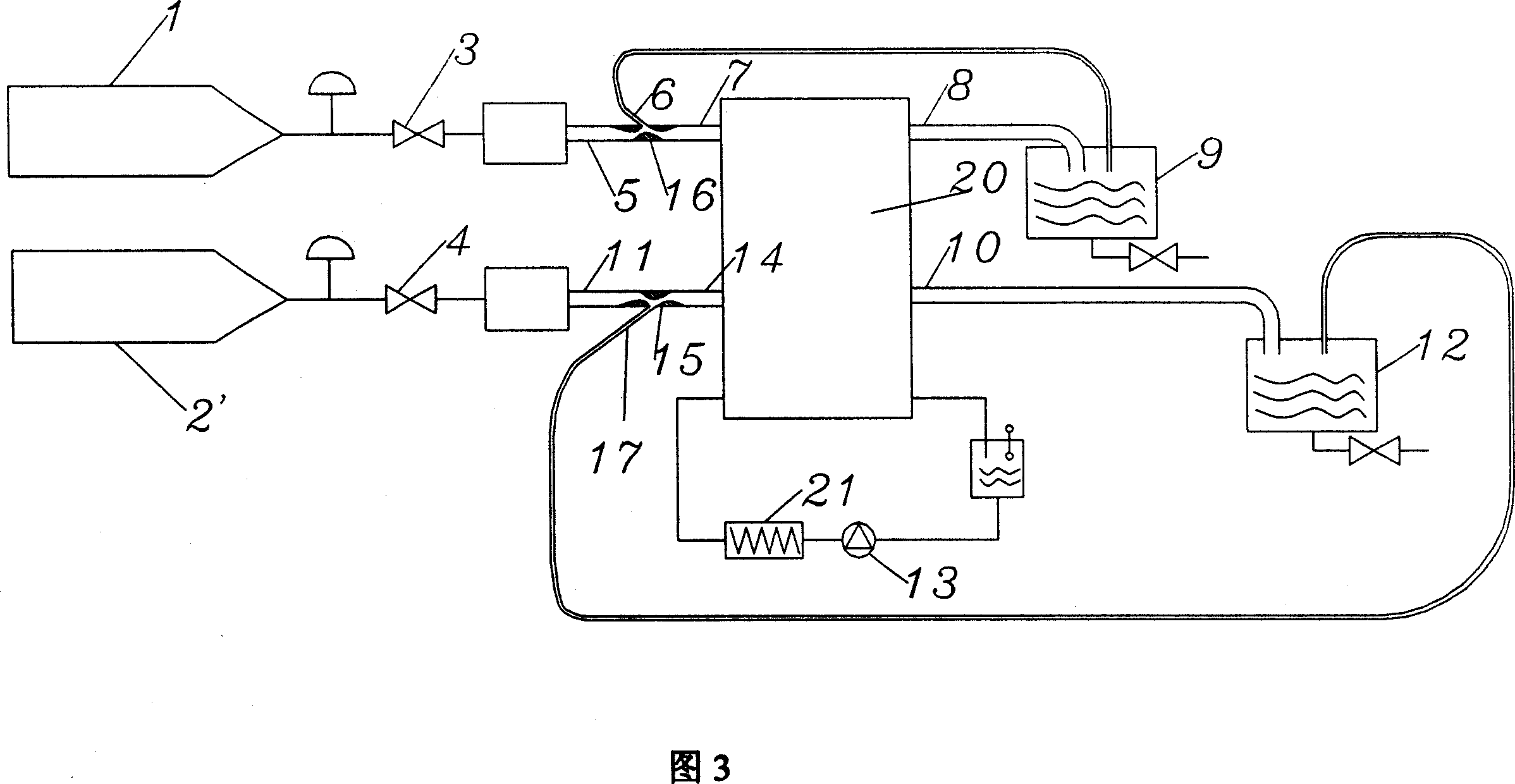Device for sufficiently utilizing hydrogen and oxygen of fuel cell
A technology of fuel cells and fuel cell stacks, which is applied to fuel cell components, fuel cells, fuel cell additives, etc., can solve the problems of large differences in processing, difficulty, and high cost of ejector pumps, and achieve convenient implementation and low price. cheap effect
- Summary
- Abstract
- Description
- Claims
- Application Information
AI Technical Summary
Problems solved by technology
Method used
Image
Examples
Embodiment 1
[0045] As shown in Figure 2, it is a hydrogen-air type 10-kilowatt fuel cell power generation system. Hydrogen gas at 2 to 1000 atmospheres can be stored in the hydrogen compression container 1, and the pressure can be stabilized at 0.1 to 5 atmospheres after passing through the pressure regulating and stabilizing valve 3. under some pressure. The air compression pump 2 can supply air pressure with a certain specific working pressure of 0.1 to 8 atmospheres. After the pressure regulating and stabilizing valve 4, the pressure stabilized is approximately equal to the pressure after the decompression and pressure stabilization of the above-mentioned hydrogen gas.
[0046] The hydrogen gas passes through the main supply channel pipe 5, and the flow velocity is increased at the narrow throat 16, and a vacuum suction is generated on the manifold 6. Hydrogen enters the fuel cell from the fuel cell inlet 7, and the part with a stoichiometric ratio of 1.0 participates in the electroche...
Embodiment 2
[0051] As shown in Fig. 3, it is a kind of hydrogen-oxygen type 10 kilowatt fuel cell power generation system, hydrogen compression container 1, oxygen compression container 2' each can store hydrogen and oxygen of 2 to 1000 atmospheric pressure. After the hydrogen and oxygen supply regulator valves 3 and 4 regulate and stabilize the pressure, the hydrogen and oxygen supply fuel cell pressure is stabilized at a certain pressure of 0.1 to 5 atmospheres, and the two pressures are roughly equal. Hydrogen and oxygen each pass through the supply main channel pipes 5, 11 and respectively increase their flow velocities at the narrow throats 16, 15, and respectively generate vacuum suction to the manifolds 6, 17. Hydrogen and oxygen enter the fuel cell through the inlets 7 and 14 of the fuel cell. Part of the hydrogen and oxygen with a stoichiometric ratio of 1.0 participate in the electrochemical reaction to generate water, and the fuel cell 20 outputs current and voltage to the outsi...
PUM
 Login to View More
Login to View More Abstract
Description
Claims
Application Information
 Login to View More
Login to View More - R&D
- Intellectual Property
- Life Sciences
- Materials
- Tech Scout
- Unparalleled Data Quality
- Higher Quality Content
- 60% Fewer Hallucinations
Browse by: Latest US Patents, China's latest patents, Technical Efficacy Thesaurus, Application Domain, Technology Topic, Popular Technical Reports.
© 2025 PatSnap. All rights reserved.Legal|Privacy policy|Modern Slavery Act Transparency Statement|Sitemap|About US| Contact US: help@patsnap.com



